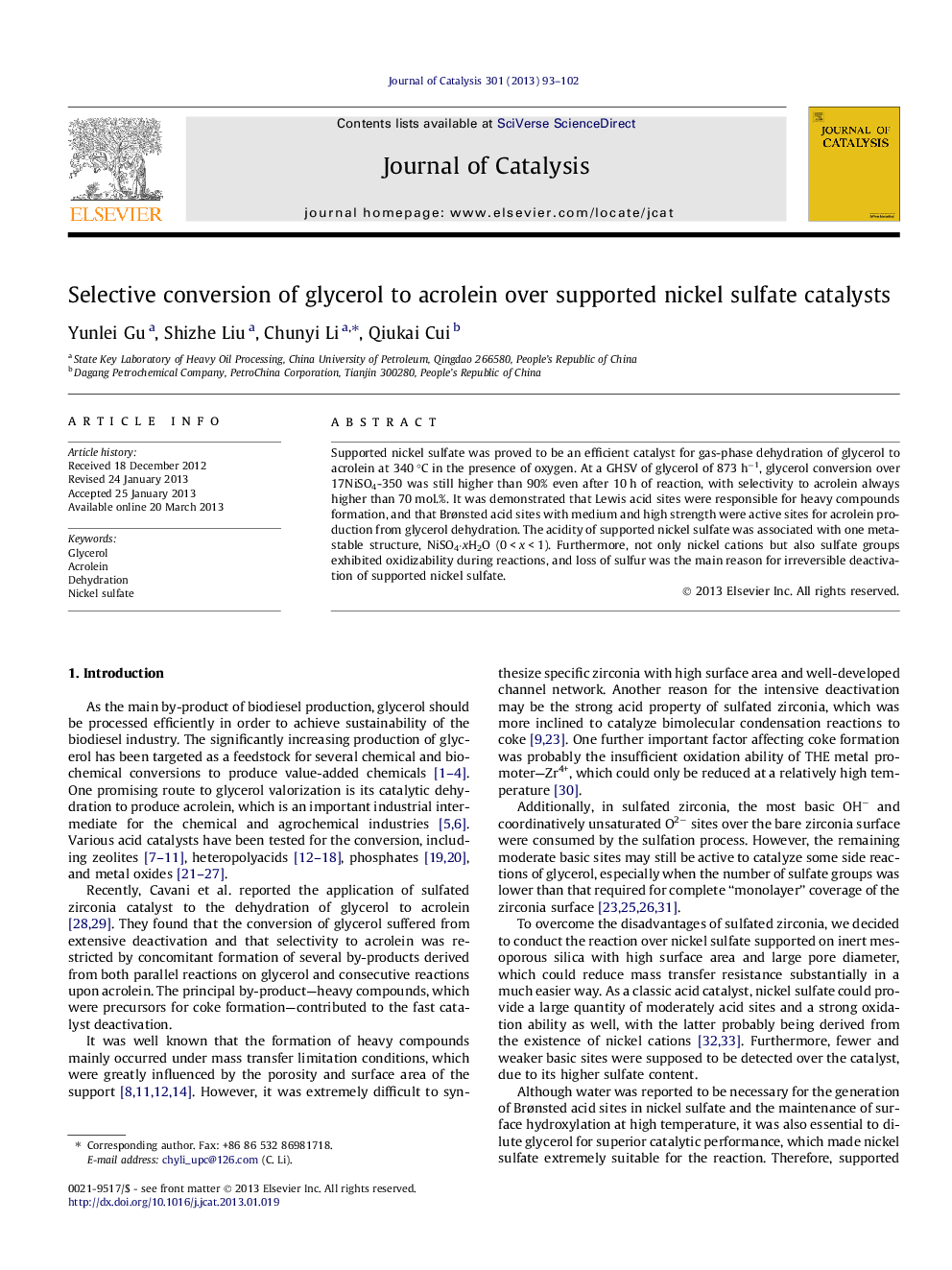| کد مقاله | کد نشریه | سال انتشار | مقاله انگلیسی | نسخه تمام متن |
|---|---|---|---|---|
| 61282 | 47574 | 2013 | 10 صفحه PDF | دانلود رایگان |

Supported nickel sulfate was proved to be an efficient catalyst for gas-phase dehydration of glycerol to acrolein at 340 °C in the presence of oxygen. At a GHSV of glycerol of 873 h−1, glycerol conversion over 17NiSO4-350 was still higher than 90% even after 10 h of reaction, with selectivity to acrolein always higher than 70 mol.%. It was demonstrated that Lewis acid sites were responsible for heavy compounds formation, and that Brønsted acid sites with medium and high strength were active sites for acrolein production from glycerol dehydration. The acidity of supported nickel sulfate was associated with one metastable structure, NiSO4·xH2O (0 < x < 1). Furthermore, not only nickel cations but also sulfate groups exhibited oxidizability during reactions, and loss of sulfur was the main reason for irreversible deactivation of supported nickel sulfate.
Supported nickel sulfate was proved to be an efficient catalyst for gas phase dehydration of glycerol to acrolein. Brønsted acid sites with medium and strong strength were active sites for acrolein production, while Lewis acid sites were more inclined to catalyze reactions to heavy compounds.Figure optionsDownload high-quality image (234 K)Download as PowerPoint slideHighlights
► Supported nickel sulfate was efficient in glycerol dehydration to acrolein.
► Lewis acid sites were more inclined to catalyze reactions to heavy compounds.
► Relatively strong Brønsted acid sites were active sites for acrolein production.
► The acidity of supported nickel sulfate was associated with NiSO4·xH2O (0 < x < 1).
► Loss of sulfur was the main reason for irreversible deactivation of nickel sulfate.
Journal: Journal of Catalysis - Volume 301, May 2013, Pages 93–102